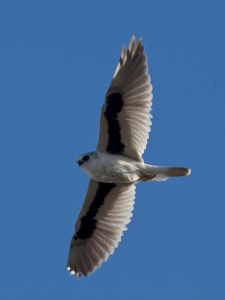Recent rainfall in the Simpson Desert prompted me to spend some time out there in April with Prof Chris Dickman and his ‘Ratcatchers’ from the Desert Ecology Research Group from the University of Sydney. It was my 10 year anniversary since my last trip there and much has changed in that time.
When I last visited the Simpson Desert, Chris and his team had spent the last 15 years monitoring native mammal and reptile responses to boom and bust periods of high and low productivity related to extreme rainfall events. They now are about to complete their 25th year of data collection. Since then, the three grazing properties that they perform their research on have undergone some changes. Two of them, Ethabuka and Cravens Peak, are now Bush Heritage Reserves, with grazing pressure reduced to allow native species to recover. Some species seem to be recovering – desert mice were recently recaptured after 10 years absent, and other small mammals such as the long-haired rat irrupted in plague proportions after the rains in 2011.
However, booms are not all good news. Extreme rainfall events drive irruptions of native rodents but also provide the perfect conditions for the establishment of feral predators, for whom the boom irruptions of native mammals act like a giant smorgasbord.
Long-term data such as Chris’s are crucial for learning about these changes – 10 years can easily go by in bust times when most species densities are so low that it is hard to know if they are still there.
We are slowly starting to learn about the many different and complex responses of mammals and reptiles to boom and bust changes in the desert, but even less is known of how nomadic birds respond to natural and human-induced disturbances, due to the huge difficulties in monitoring highly mobile species that often have a range of hundreds of thousands of kilometres. Luckily, I have recently had the opportunity to be involved with research into predicting the distributions and vulnerability of arid zone birds to current threatening processes, with my friend Claire Runge, who is finishing her PhD at the University of Queensland. Claire’s work revolves around improving the way we manage migratory and nomadic species. Claire recently had a review on conserving mobile species published in Frontiers in Ecology and the Environment, and we have followed up on that with research just accepted in the journal Conservation Biology that demonstrates a new way to map species ranges using dynamic time-sliced species distribution models. This allows us to more accurately calculate the extinction risk of nomads who are difficult to monitor and learn about, particularly in arid and semi-arid Australia which covers over 5 million square kilmometres. This important work improves the current IUCN Red List approaches for listing threatened species, which we argue fail to adequately consider and deal with highly mobile species.
Ethabuka Reserve is a 213,300–hectare private nature reserve in Central West Queensland, Australia, 157 km north-west of Bedourie, 336 km south-west of Boulia and 639 km south of Mount Isa.
Volunteer opportunities are available with Chris and his team four times a year to visit the desert and help out with their research. Work is hard but in such a beautiful place a single desert sunset is worth all the flies and dust!



Hello Ayesha, I would be interested in being involved in future surveys – are you able to give me more details, when, for how long, cost.
Hi Catherine- send me an email and I can send you some more information on our upcoming surveys, we often have volunteer spots available 🙂
Hi Ayesha, its been awhile, but yes I would still be keen to volunteer. I’ve just gotten back from 6 months long service leave from my Land for Wildlife job with Brisbane City Council but I’m sure I will be able to swing something for later in the year.
I’m not sure of your current email address but would be great to see if I could assist or tag along to something?
My email is catherine.madden@brisbane.qld.gov.au or 0478 30 55 79